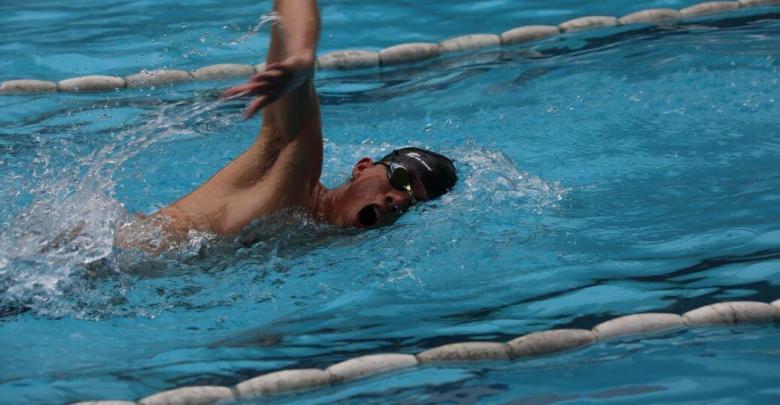Improve breathing in swimming with these 5 exercises
We give you 5 exercises to improve it

One of the most important aspects when swimming is knowing coordinate breathing with the action of the arms and the legs, without losing the frequency of swimming or body position. We help you improve with 5 exercises.
1. Learn to expel the air
Consciously sealing your lips only adds unnecessary tension to your body, so while swimming you should keep your mouth relaxed so that you can slowly expel the air.
The exhalation intensity depends on the swimming speed, the higher the swimming speed, the more intensity.
You can work it analytically by grabbing the curb and submerging to release all the air from your lungs. Then swim at a very comfortable pace focusing your attention on the breath.
2. Maintain body position
When we breathe during the swim, a very common mistake is losing the horizontality and body alignment due to the elevation of the head to breathe.
For this to not happen you must work the roll, turning on the longitudinal axis from the head to the feet, which will allow you to breathe keeping the face on the surface and without sinking your hips and legs.
3. Coordinate breathing
Another frequent error that we can find is the lack of coordination between the stroke and the breath.
Breathing should begin when the arm is ending the push phase (before the hand comes out of the water) and must end before the recovery does (before the hand enters the water again).
One way to work this coordination is to perform the stroke in an alternative way with the support of a table. You must make sure that your breathing turn occurs when the hand reaches the thigh and the elbow comes out to start the recovery.
4. Work different frequencies and both sides
In addition to compensating the repetitive movement, working both sides of breathing will give you an advantage in the face of the situations of the competition (orientation towards the buoy, waves, crowds, etc.).
A highly recommended exercise for this is to perform a "ladder or pyramid”Of breaths.
It consists of adding decreasing the breathing frequency every 25 or 50m, for example:
- 50m breathing every 2 strokes (each length aside), 25m breathing every 3, 50m every 4 strokes (each length aside), 25m breathing every 5 strokes, 50m every 6 strokes (each length aside).
In this way we work both sides in unilateral (pairs) breaths as well as in bilateral breaths (the odd ones).
5. Work the apneas
Another way to gain lung capacity is by apneas in diving. You can help with the fins if you prefer.
To work them you can do it in a specific way resting each exercise or integrated with swimming (this will be more expensive). For instance:
- 6x25m diving maximum stamina, 30 sec. Recovery
- 4x50m: 25m diving maximum stamina + 25m soft swim recovery
Include the exercises within your technical improvement objectives and practice them quite often, mainly those that help you coordinate the movement and not lose the fluidity in the swim.

Dra. Science of Physical Activity and Sport
There are no previous results.




























